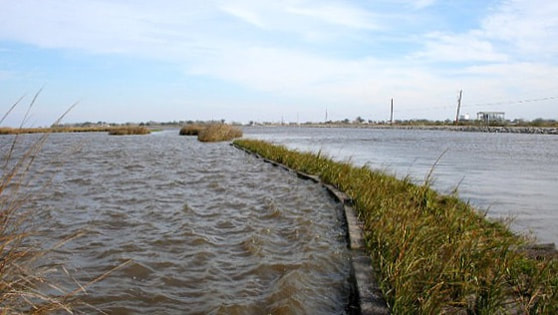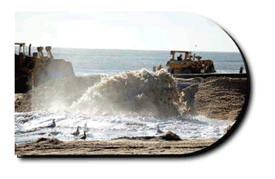See This Report about Shore Protect Team
Wiki Article
The Best Strategy To Use For Shore Protect Team
Table of ContentsA Biased View of Shore Protect TeamGet This Report about Shore Protect TeamThe Shore Protect Team PDFsHow Shore Protect Team can Save You Time, Stress, and Money.Shore Protect Team Can Be Fun For EveryoneGetting My Shore Protect Team To WorkShore Protect Team for Beginners
Decrease in property worth: As the area tourist is impacted by disintegration, so after that is the economic situation. Customers are less most likely to browse for a coastline home that could be ruined anytime by the upcoming flooding and erosion emergency. In turn, residential property worth can go down tremendously and impact the entire region.Whether a beach is just little and jampacked or needs to close completely for the security of the community and nearby buildings, this substantially affects tourist. Consequently, local economic climates are affected (https://filesharingtalk.com/members/623382-shrprtcttm). Risk of injury: The increased threat of flooding and structural failures causes an increased threat of injury to neighboring tourists and community participants

Coastline stablizing is straight relevant to their job. Waterfront hotels: Since shoreline erosion impacts tourism, it affects the success of waterfront resorts.
The Basic Principles Of Shore Protect Team
This eventually leads to closures and abandoned beachfront residential properties. Coastal commercial services: No visitors suggests no company. For those organizations dealing with locals, their building goes to risk of damage from erosion and flooding. Coastal state parks: State parks that exist along coastlines are at threat of damages. Not just to the manmade frameworks and properties on website, however likewise to the all-natural communities that exist within.Soft stabilization is a better remedy for the setting and more sustainable overall. Hard stablizing makes use of manufactured frameworks as security to regulate disintegration. Typically, these structures are mounted at best angles or alongside stop sand movement and reduce the force of waves. A lot of types of tough stabilization like seawalls and sheet steel are not ideal for shoreline stabilization.
An Unbiased View of Shore Protect Team
There's also inadequate evidence of their effectiveness depending on the kind of coastline and regional conditions. Hard stabilization techniques tend to be harder to set up and don't match the all-natural visual, sticking out like an aching thumb and damaging regional ecological communities in lots of circumstances. Coastline nourishment is the procedure of including lost sand and sediment back to beaches after disintegration has occurred.TrapBags help in the procedure of beach nourishment by shielding all-natural ecosystems and enabling plants to grow. While this procedure can be costly and is not permanent, the pros have a tendency to outweigh the disadvantages. TrapBag barriers deal numerous buildings that make them excellent for coastal and shore erosion security. They're: Environmentally pleasant: You can utilize native soil both to surround and to load the TrapBags.

The Of Shore Protect Team
Easy to install: Alleviate of installment means TrapBags can be deployed quickly in case of an emergency. They can additionally be installed with no heavy machinery. Budget-friendly: TrapBags are suitable for both little and big areas of coastline. They give a budget friendly solution to cover tasks of any kind of size.The appropriate seawall layout depends on location-specific facets, including bordering disintegration procedures. There are three primary sorts of seawalls: upright, curved, tipped, and piles (see table listed below). A record released by the United Nations Environment Program (UNEP) recommends that the tsunami of 26 December 2004 triggered much less damage in the locations where all-natural obstacles existed, such as mangroves, coral reefs or coastal greenery.
Natural barriers, such as coral reefs and mangrove woodlands, protect against the spread of tidal waves and the flow of seaside waters and reduced the flood and surge of water. A cost-benefit method is a reliable way to establish whether a seawall is suitable and whether the benefits are worth the cost.
Shore Protect Team Can Be Fun For Everyone
A seawall is a static attribute which can conflict with the vibrant nature of the coast and hamper the exchange of sediment between land and sea. Advantages and downsides of seawalls according to Short (1999) Advantages Downsides Lengthy term solution in contrast to soft beach nourishment (https://stocktwits.com/shrprtcttm).
This can trigger beaches to dissipate, providing them useless for coastline goers. Generally, seawalls can be an effective method to control coastal disintegration, yet only if they are built well and out of materials that can hold up against the force of continuous wave power. Some understanding is required of the coastal processes and morphodynamics certain to the seawall area.
Shore Protect Team Fundamentals Explained
Combined with a high building and construction price, this has actually caused raising use of various other soft engineering coastal monitoring alternatives such as beach replenishment. Seawalls are created from different materials, most typically reinforced concrete, rocks, steel, or gabions. Various other feasible building products consist of vinyl, timber, light weight aluminum, fiberglass composite, and naturally degradable sandbags constructed from jute and coir. The ideal seawall design depends on location-specific elements, including surrounding erosion processes. There are 3 primary kinds of seawalls: vertical, rounded, tipped, and piles (see table listed below). A record released by the United Nations Atmosphere Program (UNEP) suggests that the tsunami of 26 December 2004 triggered less damage in the areas where all-natural barriers were present, such as mangroves, reef or seaside vegetation.All-natural barriers, such as reef and mangrove forests, protect against the spread of tidal waves and the circulation of coastal waters and reduced the flooding and rise of water. A cost-benefit method is an effective method to establish whether a seawall is proper and whether the advantages are worth the cost.
Get This Report on Shore Protect Team
A seawall is a fixed function which can conflict with the dynamic nature of the coastline and hamper the exchange of sediment between land and sea. Advantages and negative aspects of seawalls according to Short (1999) Advantages Negative aspects Long term option in comparison to soft coastline nutrition.
This can create beaches to dissipate, providing them worthless for beach goers. Typically, seawalls can be a successful way to control coastal erosion, but only if they are built well and out of materials that can hold up against the pressure of ongoing wave energy.
Report this wiki page